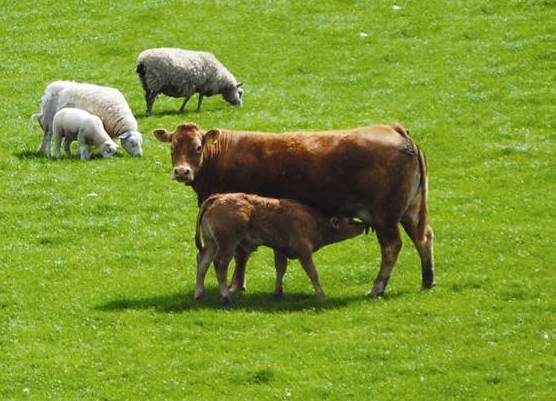Industry releases updated reports on cattle and sheep health and welfare
Tuesday, 24 November 2020
The GB Cattle and UK Sheep Health and Welfare Groups (CHAWG and SHAWG) have launched their final biennial industry reports, highlighting areas of focus to drive forward improvements in the health and welfare of cattle and sheep.
The reports, which signify 10 years of collaboration within industry and government, are wide-ranging, bringing together facts and figures relating to beef and dairy cattle production across GB, and sheep production across the UK. Topics covered include industry structure and priorities, challenges and opportunities, health performance, disease surveillance and responsible medicine use.
Chief Veterinary Officer for the UK, Christine Middlemiss, welcomed the reports and said: “We congratulate the groups and all of their participants on providing the bridge between individual farm management and the health and welfare narrative that is so crucial to the future of the industry.
“Collating key data and understanding drivers for behavioural change are vital. The value of the continued work in driving health and welfare improvements, along with environment, performance and cost benefits, has been recognised across the sector.
“We now need to work in partnership across government, industry, science and academia, using a sound evidence base to agree disease control and eradication strategies moving forward.”
The CHAWG report covers Industry-led programmes to stamp out BVD and Johne’s Disease, which continue to make big advances following new marketing campaigns and initiatives. With regards to youngstock, substantial progress has been made on reducing the numbers of dairy bull calves euthanised on farm. A cross-industry coalition have outlined a vision for the dairy industry to rear all calves with care and eliminate euthanasia of calves by 2023.
Tim Brigstocke, Chair of CHAWG, said: “A quick glance over the past 10 years shows just how much progress the cattle sector has made in monitoring and reporting on relevant issues and then doing something about them. As we leave the EU, we can genuinely say Great Britain is in a good place as far as cattle health and welfare is concerned. There is always more to do, but it’s a continuously improving situation.”
The SHAWG report examines progress over six key objectives, including aims to reduce the impact of disease through better use of surveillance, and prioritising nutrition and welfare.
Positive progress has been made on lameness, with substantial reductions in national levels, with the sector heading towards meeting the Animal Welfare Council target of fewer than 2% of sheep lame by 2021. An increase in uptake of AssureWel assessments, which use outcome indicators to gauge welfare standards, is reported, alongside a link between improved ewe nutrition and higher neonatal lamb survival due to the positive effect on colostrum quality. The report also highlights an increase in coordinated efforts to control sheep scab.
Charles Sercombe, Chair of SHAWG, said: “As we enter an era of undoubted change, the sheep industry will be challenged in ways that we can only speculate as to their impact.
“Working towards SHAWG’s vision of a world class sheep industry that is inspired by and competing with the best, this will continue to put us in a position to exploit the opportunities I see coming, whether in new or existing markets. Healthier and more productive sheep will contribute to this.”
Both cattle and sheep reports highlight the One Health role livestock farming has in supporting efforts to reduce the development of antimicrobial resistance (AMR).
According to Kynetec data, supplied by kind permission of MSD Animal Health, the sheep sector achieved a 34% decrease in total sales of oral antibiotics to treat neonatal lambs in the UK between 2016 to 2020.
The cattle sectors have also performed well in terms of reducing antibiotics, with lactating cows intramammary tube sales falling 10% and dry cow tubes, 20% over the same period. Sales of injectable Highest Priority Critically Important Antibiotics for cattle also halved.
The new Ruminant Health and Welfare organisation, which replaces CHAWG and SHAWG, will build on the success/legacy of these two groups and continue to accelerate progress on endemic disease as well as the broader health and welfare challenges.
The final CHAWG and SHAWG reports can be downloaded from www.chawg.org.uk and www.shawg.org.uk


